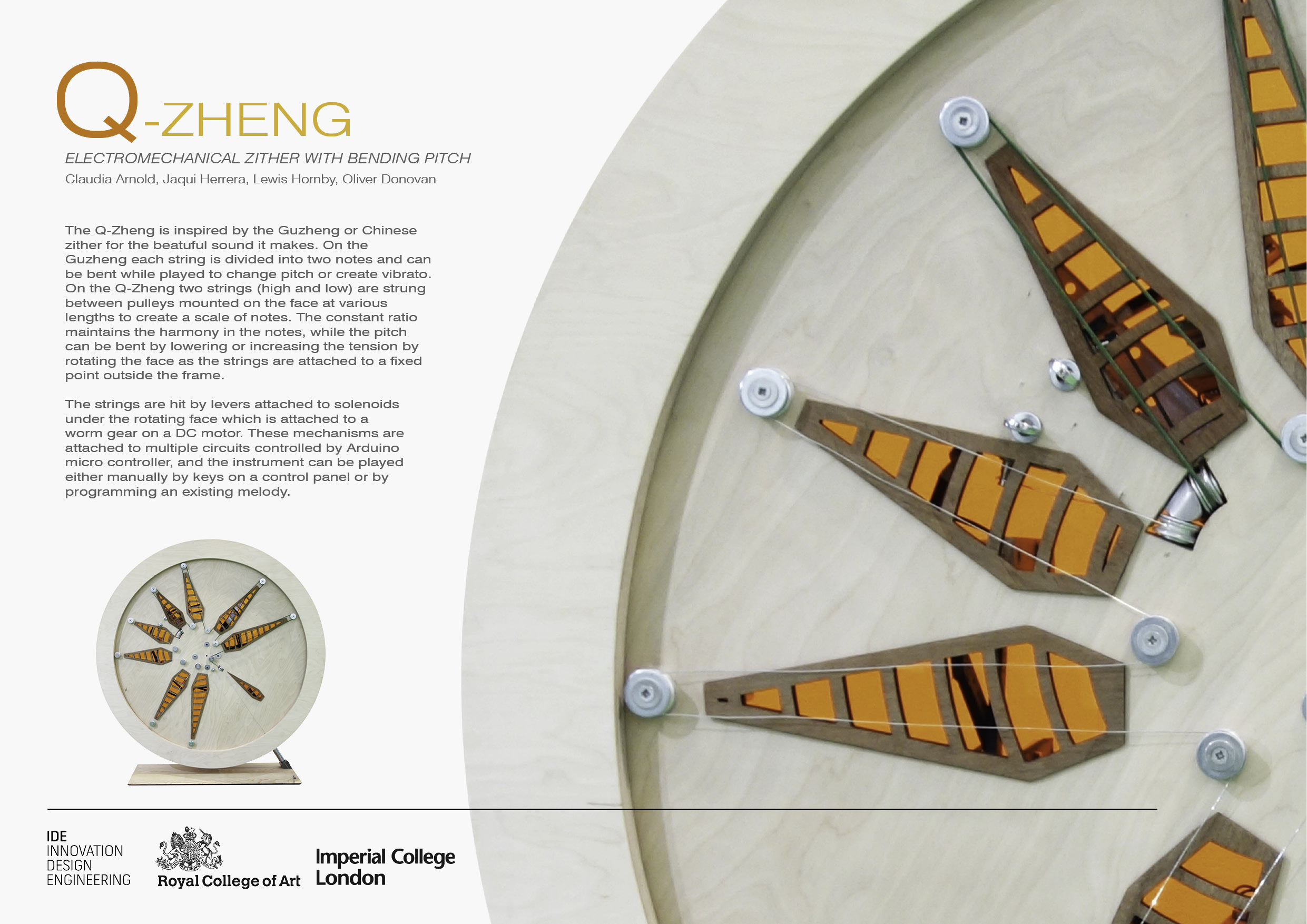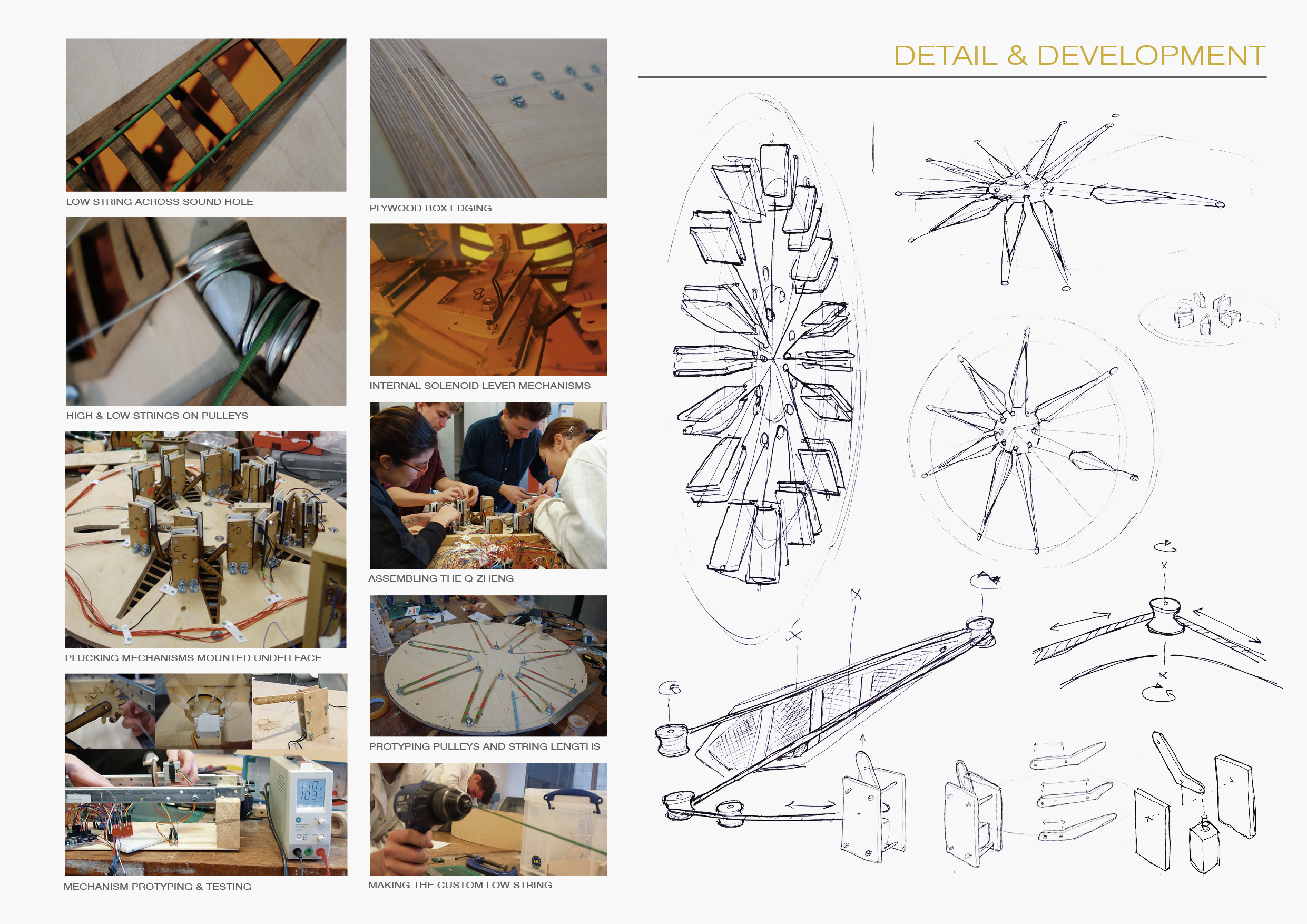

︎
TEAM: CLAUDIA ARNOLD, OLIVER DONOVAN,
JACQUI HERRERA & LEWIS HORNBY
JACQUI HERRERA & LEWIS HORNBY
The Q-Zheng is inspired by the Guzheng or Chinese
zither for the beatuful sound it makes. On the
Guzheng each string is divided into two notes and can
be bent while played to change pitch or create vibrato.
On the Q-Zheng two strings (high and low) are strung
between pulleys mounted on the face at various
lengths to create a scale of notes. The constant ratio
maintains the harmony in the notes, while the pitch
can be bent by lowering or increasing the tension by
rotating the face as the strings are attached to a fixed
point outside the frame.
zither for the beatuful sound it makes. On the
Guzheng each string is divided into two notes and can
be bent while played to change pitch or create vibrato.
On the Q-Zheng two strings (high and low) are strung
between pulleys mounted on the face at various
lengths to create a scale of notes. The constant ratio
maintains the harmony in the notes, while the pitch
can be bent by lowering or increasing the tension by
rotating the face as the strings are attached to a fixed
point outside the frame.
The strings are hit by levers attached to solenoids
under the rotating face which is attached to a
worm gear on a DC motor. These mechanisms are
attached to multiple circuits controlled by Arduino
micro controller, and the instrument can be played
either manually by keys on a control panel or by
programming an existing melody.
under the rotating face which is attached to a
worm gear on a DC motor. These mechanisms are
attached to multiple circuits controlled by Arduino
micro controller, and the instrument can be played
either manually by keys on a control panel or by
programming an existing melody.

